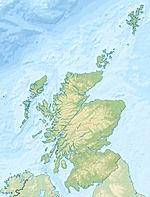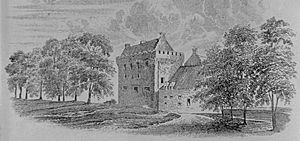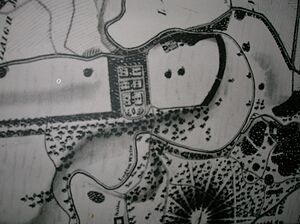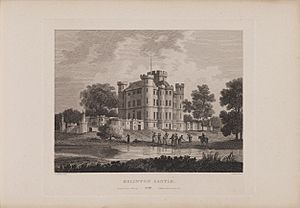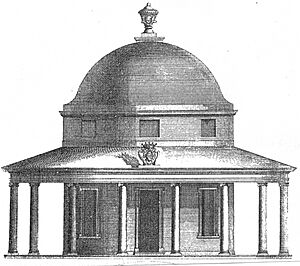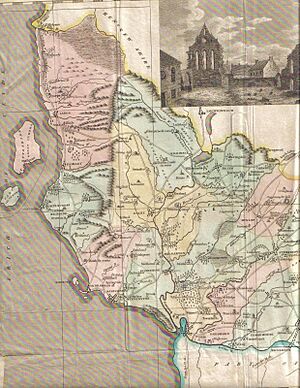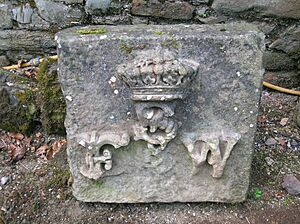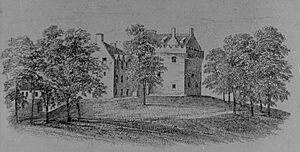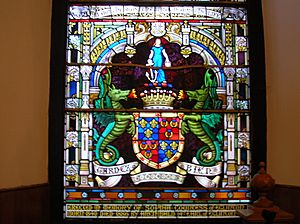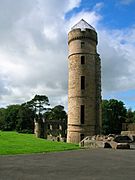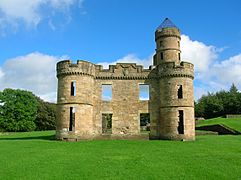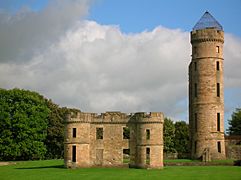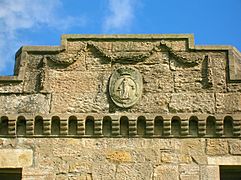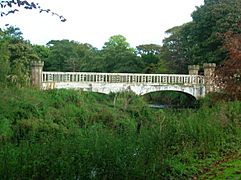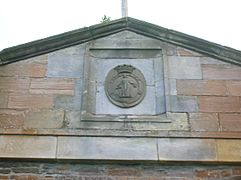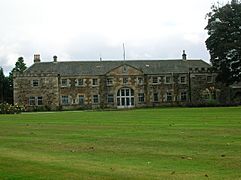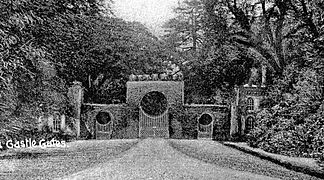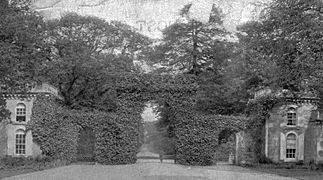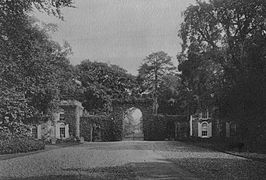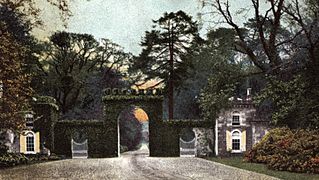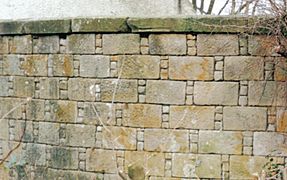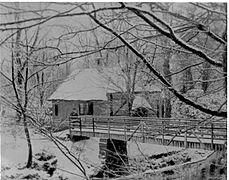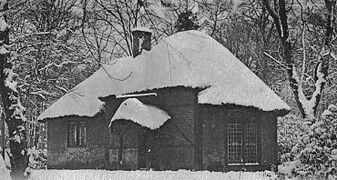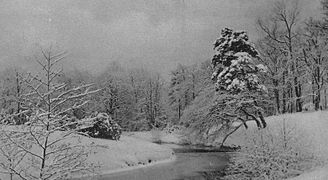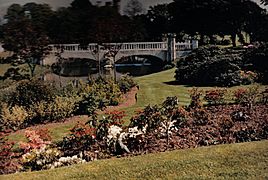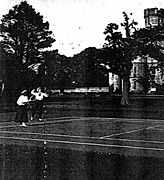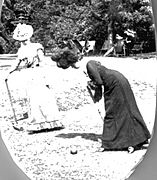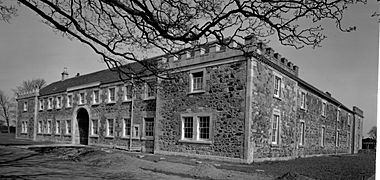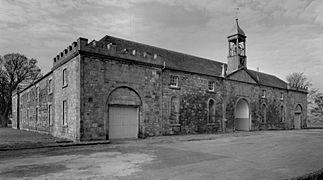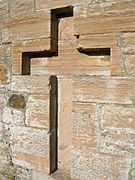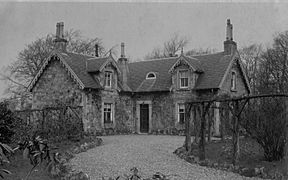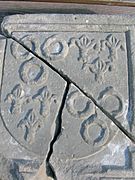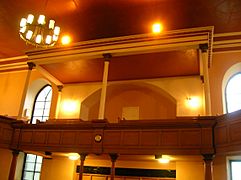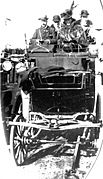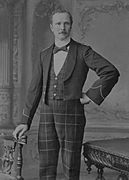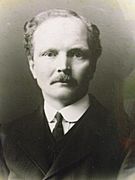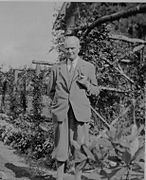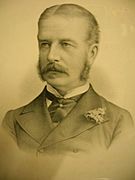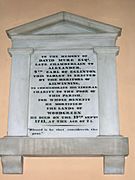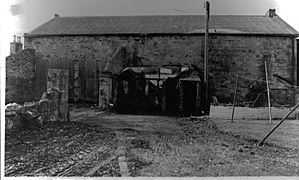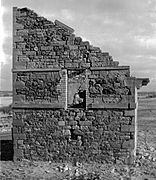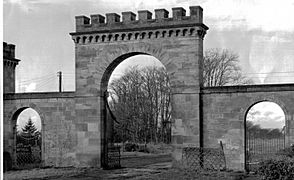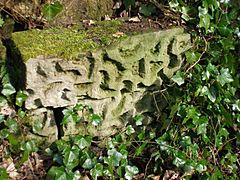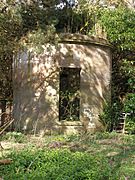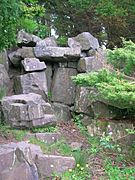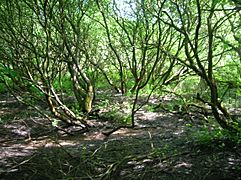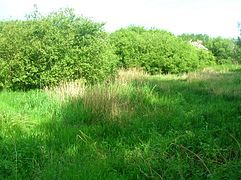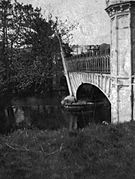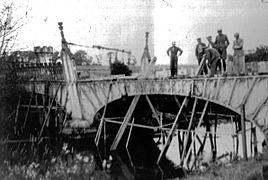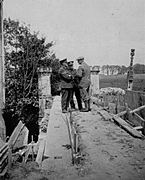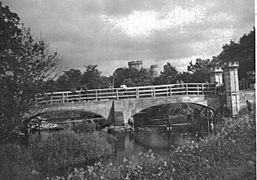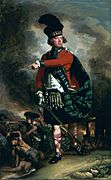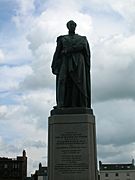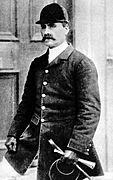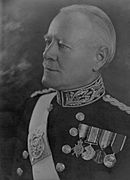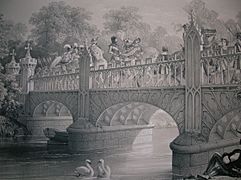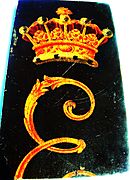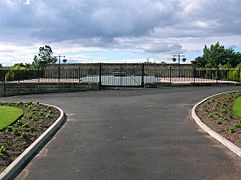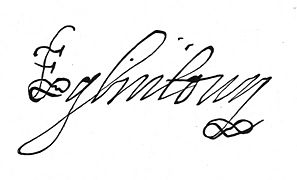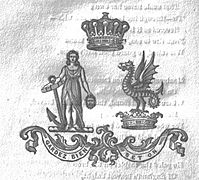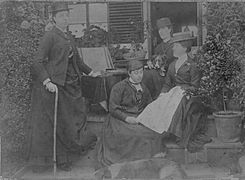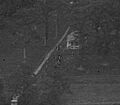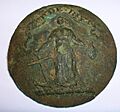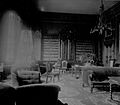Eglinton Castle facts for kids
Quick facts for kids Eglinton Castle |
|
|---|---|
| Kilwinning, North Ayrshire, Scotland | |

Eglinton Castle in the 1920s
|
|
| Coordinates | 55°38′30″N 4°40′18″W / 55.641778°N 4.671639°W |
| Height | 70 feet |
| Site information | |
| Owner | North Ayrshire Council |
| Controlled by | Montgomerie clan |
| Open to the public |
Eglinton Country Park |
| Condition | Stabilised Ruins |
| Site history | |
| Built | 19th century |
| Built by | 12th Earl of Eglinton |
| In use | Until the 20th century |
| Materials | Sandstone |
Eglinton Castle was a huge, fancy house in Kilwinning, North Ayrshire, Scotland. It was built in a Gothic style, looking like an old castle.
Contents
History of Eglinton Castle
Building the Castle
Eglinton Castle was the main home of the Earls of Eglinton. It is located just south of Kilwinning. The very first Eglinton Castle was burned down in 1528.
The castle you see in pictures was built between 1797 and 1802. It was designed in a Gothic style, with a large, round central tower that was about 30 meters (100 feet) tall. It also had four smaller towers, each about 21 meters (70 feet) high.
The 12th Earl of Eglinton started the building work in 1797. This new castle was considered one of the most impressive in Ayrshire, almost as grand as Culzean Castle.
The castle had many interesting things inside. One special item was a chair made from oak wood from Alloway kirk. The back of the chair had a brass plaque with the whole poem Tam o' Shanter by Robert Burns. This chair was sold in 1925.
People used to say there was a secret escape tunnel from the old castle. It was thought to lead to a rocky area on the castle lawns. This story might have come from an old waterfall that looked like a hidden door.
The Montgomerie family, who owned the castle, had a lot of land. In 1788, they owned about 34,716 Scots Acres. This included land on Little Cumbrae and in other areas.
The original Eglinton Castle might have been near Kidsneuk, where an old earth mound stands. Pottery found there suggests a building from the 13th century.
The Montgomerie family's first lands were in Eaglesham, where they had Polnoon Castle.
In 1691, records show that Eglinton Castle had 25 fireplaces, which was the most for any single home in Ayrshire. The Earl's other house in Kilwinning had 15 fireplaces.
The stables for the castle were built using stones from the Easter Chambers of Kilwinning Abbey. This was where the Abbots lived, and later the Earls of Eglinton. In 1784, this old building was taken down, and its stones were moved to Eglinton to build the stables.
Some people were not happy about the new castle being built. They liked the old, grand castle surrounded by ancient trees. The new building changed the old, peaceful feel of the estate. It is also said that the castle had a moat around it.
Castle Tunnels
There are stories about a secret tunnel running from Kilwinning Abbey to Eglinton Castle. No proof has been found for this tunnel. However, the Montgomerie family does have an underground burial vault beneath the old abbey.
Another story mentions an escape tunnel from the castle. It was said to lead out near the old waterfall by the rockery. It's more likely this was a large drain from the castle, big enough for a person to walk through.
Beautiful Gardens
In the 1600s, a visitor named Sir William Brereton described the land around Irvine as "dainty, pleasant, level." This shows how much the Earls had improved the Eglinton estate.
In the 1840s, the castle grounds were described as a wonderful place to explore. Visitors would enter through grand gates and walk along a beautiful path to the gardens.
The gardens had amazing greenhouses for fruits and flowers. There was a lovely river with a waterfall flowing through the area. The gardens also featured two elegant cast-iron bridges, vases, statues, and a sundial. These artistic touches made the place feel magical.
Visitors would wander through thick woods, catching glimpses of the castle peeking through the trees. They could sit under large ash trees and enjoy a great view of the castle.
The huge stable building, which looked like a large hospital, was separate from the castle. It was easy to get lost in the many paths of the estate. Sometimes, visitors would walk by areas where animals were kept, or through the deer park, waking up the deer.
The Eglinton Woods were even mentioned in a poem called "The Guid Wee Green Folk."
In the late 1800s, the Eglinton Castle grounds were open to the public on Saturdays.
Special Trees
In 1901, Eglinton Estate had one of the best collections of important trees in southern Scotland. Some of these trees were very old and large. For example, there was a Sycamore tree with a trunk over 4 meters (13 feet) around, and a Sweet Chestnut tree with a trunk over 4.8 meters (16 feet) around.
When the estate was sold in the late 1940s, many trees were cut down for timber. However, some had already been removed in 1925.
The Eglinton Tournament
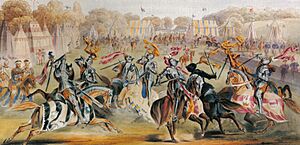
Eglinton Castle is famous for the Eglinton Tournament, which took place in 1839. This was a huge, fancy event organized by the 13th Earl. It was meant to look like a medieval tournament with knights and jousting.
The preparations were very expensive and talked about all over Scotland. A railway line was even opened early just to bring guests to Eglinton.
Even though it was summer, it rained heavily, which made things difficult. Despite the rain, the participants, dressed in full historical costumes, tried their best to take part in events like jousting. One of the participants was Prince Louis-Napoléon Bonaparte, who later became Emperor Napoléon III of France.
The Castle's End
Keeping up such a large castle was very expensive. The castle was also in poor condition, and family finances were strained. Because of this, the castle was left empty in 1925.
In 1926, the roof was removed, and the lead was sold. The castle became more and more ruined. Its final damage happened during the Second World War when the army used it for training. The army also partly destroyed the iron bridge leading to the old walled gardens.
In December 1925, a large auction was held to sell off the castle's contents. About 1,960 items were sold, raising over £7,000. Many historical items belonging to the Montgomerie family were sold, including the 13th Earl's suit of armor from the tournament. The family then moved to Skelmorlie Castle in 1925.
Even after the war, much of the castle remained. However, in 1973, most of the building was taken down for safety. Only one main tower, some outer walls, and parts of the castle's foundations were kept.
There's a story from one of the gardeners that the castle had a room that was never opened. Around 1925, after the roof was removed, a young man from Kilwinning took some wood panels from the castle. He found a skeletal hand behind one of the panels. A student doctor later removed the full skeleton.
Eglinton Family History
In 1583, Lady Anne Montgomerie brought a large sum of money, 6000 merks, to her marriage.
Lady Frances Montgomerie, daughter of the 12th Earl, was buried at Holyrood Abbey in Edinburgh in 1797.
At the crowning of King Charles I, the Earl of Eglinton had the special job of carrying the king's spurs.
Glasgow University created the Eglinton Arts Fellowship in 1862. This was to honor the public service of Archibald William, the 13th Earl of Eglinton, who was Rector of the University.
The potato was first known in Scotland in 1701. It was not popular at first, but in 1733, the Earl of Eglinton was recorded eating it for supper.
A poet named Huchoun from the 14th century is thought by some to be Hugh of Eglington.
A gipsy is said to have put a curse on the Montgomerie family. The curse said that for three generations, the family property would not pass from father to son.
Eglinton Country Park
In the 1970s, plans were made to open the large grounds (about 400 hectares or 988 acres) around the castle ruins to the public. To make it safe, most of the castle was taken down, leaving only a wing and a single tower.
Today, Eglinton Country Park is a popular place for visitors in Ayrshire, with free entry.
The Eglinton Estate was in bad shape until Robert Clement Wilson bought the grounds. He built a meat canning factory in the old stable block. He also paid to restore the grounds to their former beauty. The factory closed in 1996.
In 1963, Ian Anstruther wrote a fun book about the 1839 tournament called The Knight and the Umbrella.
- Views of Eglinton Castle in 2007
Castle and Estate Features
Lady Susanna's Cottage
Lady Susanna Montgomerie, wife of the 9th Earl, was a famous beauty. Her husband built a special "cottage orné" for her at Kidsneuk. This was a copy of a similar cottage that Marie Antoinette had at Versailles. This building is now a golf clubhouse. It had a thatched roof until the 1920s.
Dower Houses
It was a tradition for a dowager countess (the Earl's widow) to move out of the main castle. She would move to a smaller home called a dower house. Over the years, several places were used as dower houses, including Seagate Castle and Auchans Castle.
The Rackets Hall
Eglinton has a 'Racket Hall' that was built shortly after 1839. The first game recorded there was in 1846. The floor of the court was made of large granite slabs. This is the very first covered racquet court ever built. It is also the oldest indoor sports building still standing in Scotland.
Captain Moreton's Eglinton Castle Croquet
There was a croquet lawn on the northern side of the castle. The 13th Earl created his own version of croquet called 'Captain Moreton's Eglinton Castle Croquet'. This game had small bells on the hoops and two tunnels for the ball.
Lady Ha'
The Montgomerie family is believed to have had a chapel in the Weirston - Lady Ha' area before the Reformation.
- Views of the estate
-
The Lugton Water and one of the two gazebos
In 1811, records show that Galloway Cattle were kept at Eglinton. One bull produced a large amount of beef and fat.
The Eglinton coat of arms, which was restored in the Stables Courtyard, is a mirror image of the usual design.
People of the Estate
In the early 1900s, records show who worked on the estate. Mr Priest was the Head Gardener, Mr Muir was the Head Groom, and Mr Robert Burns was the estate blacksmith.
Old Estate Features
An iron bridge once crossed the Lugton Water near the kitchen garden. This bridge was removed after World War II. Only the fancy stone supports remain.
Bridge Collapse and Repair
The Earls of Eglinton
-
Hugh Montgomerie 12th Earl of Eglinton circa 1780 Oil on canvas by John Singleton Copley
-
The Montgomerie family crest. An anchor is often used as a symbol for 'hope' or 'fresh start'.
More Estate History
The "Egidia" Ship
The "Egidia" was one of the largest wooden ships ever built in Scotland. It was launched by the Earl of Eglinton in Ardrossan in 1860. Lady Egidia was the Earl of Eglinton's daughter.
The Pavilion
In the early 1900s, the Earl of Eglinton had a summer home called the Pavilion in Ardrossan. It was sold in 1924 for £4500. The building was later taken down, and a church and manse were built there.
White Cattle
In 1759, the Earl of Eglinton started a herd of rare White or Chillingham Cattle at Ardrossan. These cattle were special because they had no horns. The herd was later dispersed in 1820.
The Easter Chambers
After Kilwinning Abbey was mostly destroyed, the Earls of Eglinton used a part of the old abbey called the Garden or Easter Chambers as a family home. This building was taken down in 1784, and its stones were used to build the castle's stables.
Daft Will Speirs
Will Speirs was a well-known local character. He was said to have had a nervous breakdown after a childhood punishment. He was a friendly person who often visited the estates of important people.
The Buffalo Park
An area near the old Mains Farm was called the 'Buffalo Park'. This name might be linked to the 11th Earl's involvement with the British army in North America.
The Irish Giant
An old story tells of an Irish Giant who challenged a local wizard. The wizard chased the giant to Eglinton, where the giant tried to attack him with a tree. The wizard used his sword to injure the giant, and the giant's hand was said to have stayed attached to the tree for centuries.
Annick School
The Earl of Eglinton built a large schoolroom and a house for the teacher at Annick. He also provided a garden and playground. The building is now a private home.
Hare Coursing
In the 1840s, a club would hunt hares on Ardrossan Hill and then return to Eglinton Castle for refreshments. This activity, called hare coursing, became illegal in Scotland in 2002.
Religion
In the 1600s, Anne, Countess of Eglinton, was very religious. She made Eglinton a safe place for ministers who were being treated unfairly.
In the 1800s, the Montgomerie family supported the Scottish Episcopalian church. The Earl gave land for a church in Ardrossan, and the Countess laid the foundation stone in 1874.
Farms
In 1811, records show that almost all the farms on the Earl of Eglinton's large estates were "elegant, commodious, and substantial."
Montgomerystown
A fort was built in Ayr in 1652 using stones from the Earl's castle at Ardrossan. After it was taken down, the land was given to the Earl of Eglinton. He renamed it Montgomerystown. It became a busy trading area and had a family-owned brewery.
Rozelle Estate
Archibald Hamilton, a relative of the Earl, married Lady Jane Montgomerie. The 13th Earl gave them the use of the Rozelle mansion. Archibald Hamilton rebuilt the house in the 1830s.
Images for kids


